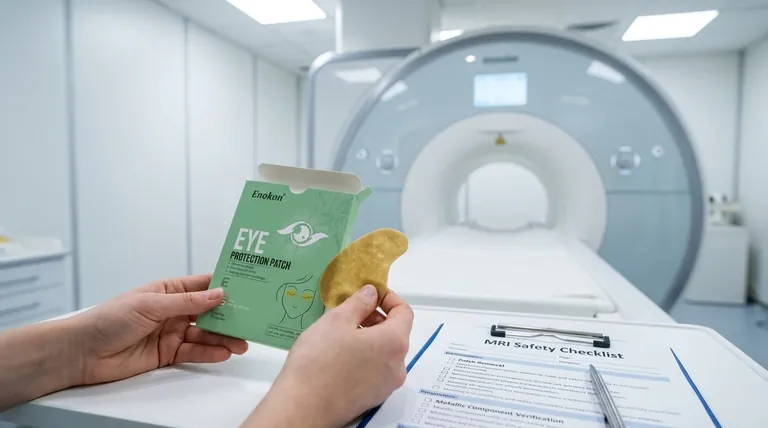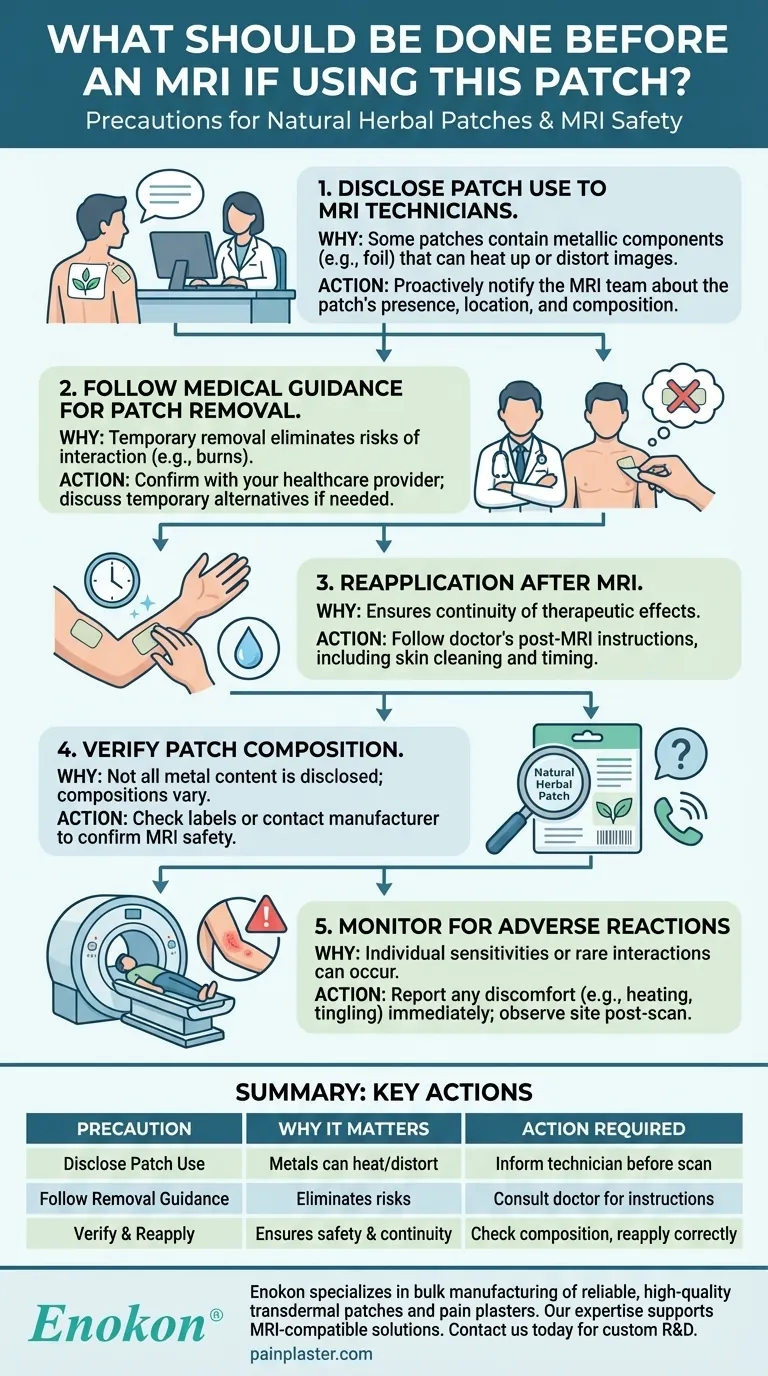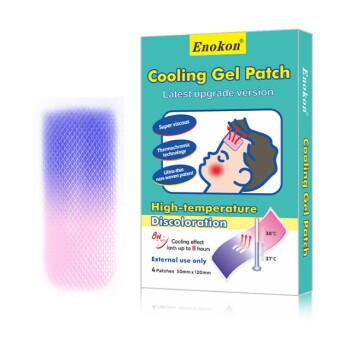Before undergoing an MRI scan while using a natural herbal patch, it is crucial to take specific precautions to ensure safety and avoid complications. The primary concerns revolve around potential metal content in the patch, which can interact with the MRI's magnetic field, leading to burns or image distortions. Always inform the MRI technician about the patch, follow medical guidance for its removal if necessary, and adhere to reapplication protocols post-scan. Consulting your doctor for tailored instructions is essential, as patch compositions vary.

Key Points Explained:
-
Disclose Patch Use to MRI Technicians
- Why: Some patches, including certain natural herbal patches, may contain metallic components (e.g., conductive adhesives or foil backings) that can heat up or interfere with MRI imaging.
- Action: Proactively notify the MRI team about the patch’s presence, location, and composition (if known) before the procedure.
-
Follow Medical Guidance for Patch Removal
- Why: Doctors or radiologists may recommend temporary removal of the patch to eliminate risks. For example, clonidine patches are explicitly advised for removal before MRI scans.
- Action: Confirm with your healthcare provider whether the patch should be removed, how to do so safely, and whether a temporary alternative (e.g., oral medication) is needed.
-
Reapplication After MRI
- Why: If the patch is removed, proper reapplication ensures continuity of its therapeutic effects.
- Action: Ask your doctor for post-MRI reapplication instructions, including skin cleaning and timing.
-
Verify Patch Composition
- Why: Not all herbal patches contain metals, but manufacturers may not always disclose full ingredients.
- Action: Check product labels or contact the manufacturer to confirm if the patch is MRI-safe.
-
Monitor for Adverse Reactions
- Why: Even if the patch is deemed safe, individual sensitivities or rare interactions could occur.
- Action: Report any discomfort (e.g., heating, tingling) during the scan immediately and observe the patch site afterward for redness or irritation.
By addressing these steps, you mitigate risks while maintaining the benefits of your natural herbal patch. Have you discussed MRI safety with your patch provider to clarify its compatibility with imaging technologies? This proactive approach ensures seamless integration of holistic therapies with modern diagnostics.
Summary Table:
| Precaution | Why It Matters | Action Required |
|---|---|---|
| Disclose Patch Use | Some patches contain metals that can heat up or distort MRI images. | Inform the MRI technician about the patch before the scan. |
| Follow Removal Guidance | Certain patches (e.g., clonidine) must be removed to avoid risks. | Consult your doctor for removal instructions and alternatives. |
| Reapply Correctly Post-MRI | Ensures therapeutic continuity if the patch is temporarily removed. | Ask your doctor for reapplication steps, including skin cleaning and timing. |
| Verify Patch Composition | Not all herbal patches disclose metal content, posing hidden risks. | Check labels or contact the manufacturer to confirm MRI safety. |
| Monitor for Reactions | Rare sensitivities or interactions may occur during/after the scan. | Report discomfort (e.g., heating) immediately and watch for skin irritation. |
Ensure your herbal patches are MRI-safe and optimized for your needs. Enokon specializes in bulk manufacturing of reliable transdermal patches and pain plasters for healthcare distributors and brands. Our technical expertise supports custom R&D and development, ensuring compatibility with modern diagnostics like MRI. Contact us today to discuss safe, high-quality patch solutions tailored to your requirements.
Visual Guide

Related Products
- Herbal Eye Protection Patch Eye Patch
- Asthma Cough and Pain Relief Patch for Adults and Kids
- Natural Herbal Wormwood Patch Pain Plaster
- Far Infrared Knee Pain Patch Heat Patches for Pain Relief
- Far Infrared Pain Patch Relief Pain Reliever for Back
People Also Ask
- Should under eye patches be applied before or after moisturizer? Optimize Your Skincare Routine
- What are the main benefits of using eye patches in a skincare routine? Revitalize Your Under-Eye Area
- Can under eye patches smooth fine lines and wrinkles? Hydrate & Plump for Youthful Skin
- What are the steps for applying under-eye patches? Boost Your Eye Care Routine
- What factors should be considered when purchasing eye patches? Essential Guide for Safe & Effective Use

















